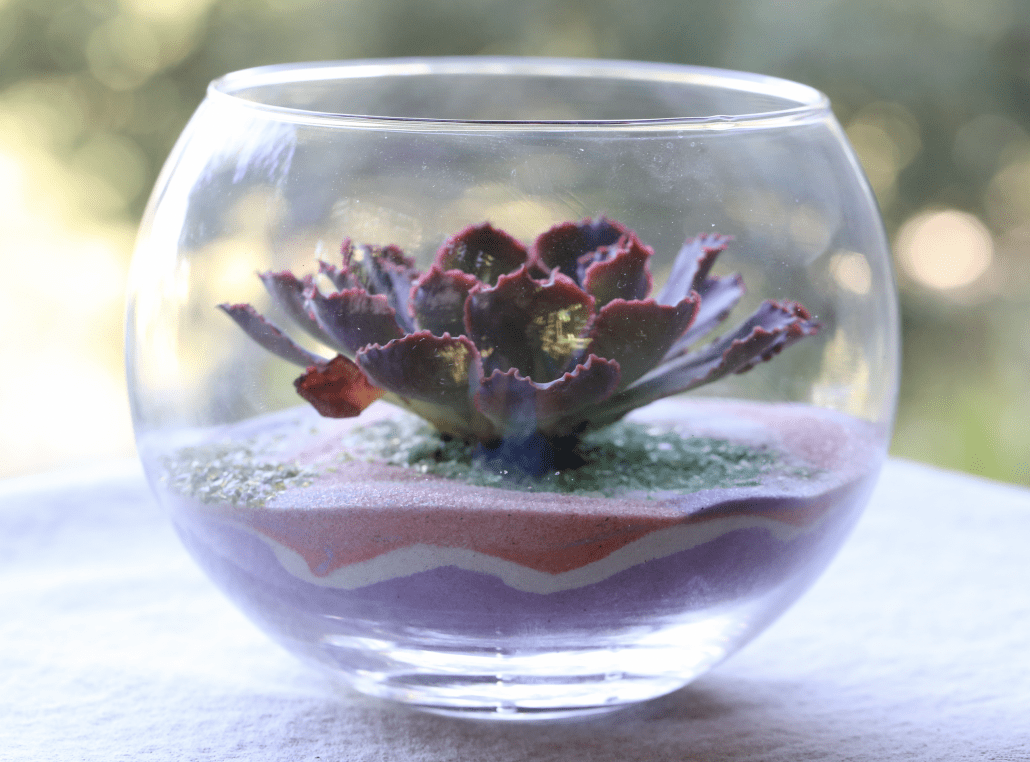Succulents—fleshy-leaved plants from hot, dry regions—are designed to live off water stored in their leaves and tissues in order to survive periods without rainfall. But this doesn’t mean you shouldn’t water them at all. In their native habitats, succulents can look pretty ratty during times of drought, and those that are not yet established may not survive.
Succulents do appreciate water and look best if given it regularly…up to a point. Their roots simply aren’t set up to handle too much water. They certainly won’t survive in mud. Don’t assume that adding rocks to the bottom of a nondraining pot provides drainage. This basically creates a bacteria-filled soup that can rot roots. On the other hand, don’t assume that a pot must have a drain hole in order for succulents to be healthy and happy. (I know it’s counterintuitive…but when you read why, you’ll see it makes sense.)
How to water succulents in pots and in the ground
Aim to keep soil about as moist as a wrung-out sponge. About once a week should do it. Water thoroughly to soak the roots and flush salts. For succulents in containers, that means until water drips out the bottom of the pot. Let common sense prevail: water more during hot, dry spells and less or not at all during periods of high humidity, cool temperatures and rain.
How to water succulents in non-draining containers
They’ll be fine if they’re not overwatered. It’s not drainage that’s important so much as avoiding root and stem rot, which succulents are prone to if they sit in water. When given less water than is optimal, they’ll draw on moisture stored in their leaves (which is the very definition of a succulent).

I water my terrarium succulents by inserting a medicine dropper full of water at the base of each plant. As soon as I see through the glass at the bottom that the sand is wet, I stop. Underwatered succulents tend to grow very little, which is a good thing because they don’t outgrow the container. You could never do this with most other plants, which, when given too little water, dry out and die.
For more about growing succulents in nondraining containers, see my video, Succulents in Silver (3:58).
What about rain?
Succulents do best in areas of winter rainfall that falls intermittently and doesn’t exceed 20 inches a year (of course there are exceptions). When rain threatens to be excessive, move potted succulents beneath your home’s eaves. Place patio umbrellas with concrete bases for stability in the garden to keep rain from soaking your in-ground succulents. Channel runoff away from garden beds. Move and replant succulents in low-lying areas where water puddles. Topdress the soil around the plants with several inches of pumice to absorb excess moisture.
See my videos, Why Rain is Good for Potted Succulents (0:53) and Post-Rain Must-Do’s for Succulent Gardens (3:51)
Overwatering concerns
The rule of thumb is to let the soil dry out (or nearly so) between waterings. An occasional overwatering won’t harm most succulents providing the soil is fast-draining. If water has collected in a pot saucer, remove it so roots don’t sit in water.
How to tell how much water a succulent needs
The fatter the succulent or the fleshier its leaves, the more water it stores in its tissues and the less water it needs (and will tolerate). Cacti in general are less tolerant of overwatering than smooth-leaved succulents. See my video, Why Succulents Rot and How to Prevent It (2:01).


The more susceptible a succulent is to rotting from excess moisture, the higher up it should go on a berm of mounded soil.
Also on this site:
See my article: Watch How You Water! How to water succulents during summer heat waves.
The post How to Water Succulents appeared first on Succulents and Succulent Garden Design | Debra Lee Baldwin.
from Succulents and Succulent Garden Design | Debra Lee Baldwin https://ift.tt/2KZEB6o
via IFTTT

No hay comentarios:
Publicar un comentario